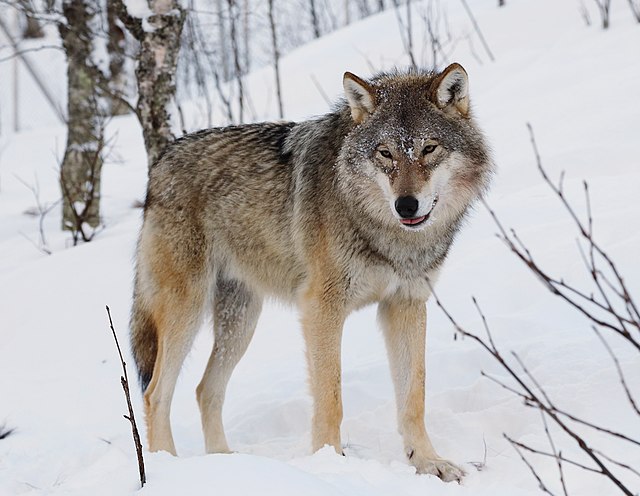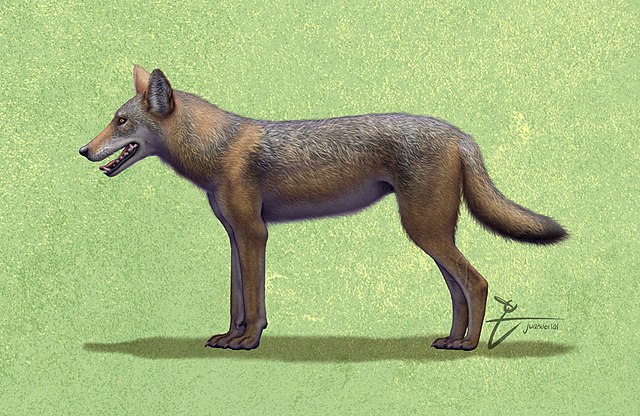Canid hybrids are the result of interbreeding between the species of the subfamily Caninae.
A Czechoslovakian Wolfdog
Captive-bred F1 gray wolf-coyote hybrids at the Wildlife Science Center in Forest Lake, Minnesota
Three golden jackal-dog hybrids from Croatia. The discovery of these specimens confirmed that hybridization between the two canids occurs in the wild, and that the two have unlimited fertility with each other.
The wolf, also known as the gray wolf or grey wolf, is a large canine native to Eurasia and North America. More than thirty subspecies of Canis lupus have been recognized, including the dog and dingo, though gray wolves, as popularly understood, only comprise naturally-occurring wild subspecies. The wolf is the largest extant member of the family Canidae, and is further distinguished from other Canis species by its less pointed ears and muzzle, as well as a shorter torso and a longer tail. The wolf is nonetheless related closely enough to smaller Canis species, such as the coyote and the golden jackal, to produce fertile hybrids with them. The wolf's fur is usually mottled white, brown, gray, and black, although subspecies in the arctic region may be nearly all white.
Wolf
Life restoration of Canis mosbachensis, the wolf's immediate ancestor
A North American wolf
A wolf skeleton housed in the Wolf Museum, Abruzzo National Park, Italy







